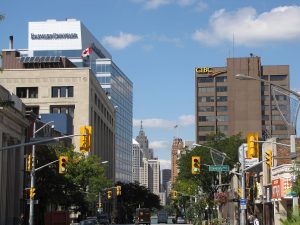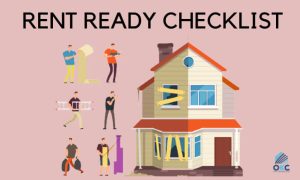So, you’re looking to build wealth in a great real estate market that shows solid long-term growth, and you’ve chosen Windsor — an excellent choice! Now comes the tricky part: choosing your investment category and getting your new rental ready for occupants.
There are many influential voices out there that will try to sway you one way or the other. Many of them don’t hold water. We’ve been in the Windsor residential real estate market for over a decade. We’ve seen what works and what doesn’t. We love sharing what we know because an informed real estate market is a healthy real estate market. So, here’s our breakdown of the pros and cons for both asset types and how you can maximize your return on investment.
Single-family Investment
This is the classic gateway to real-estate investment. It’s a tried-and-true asset class with serious draw for families, students, and workers in any market.
If you already own a home, you can also consider building an accessory dwelling unit. An ADU is one of the easiest ways to get started in the single-family residential rental game. Building one of these can greatly add to the value of your home and enable you to keep a close eye on your investment with minimal effort.
Easier Operation
One of the advantages of owning a single-family rental is simplicity. If you have a good property and maintain it well, by and large, your returns will be steady, predictable, and easy to manage.
Single-family drastically limits the number of tenants you have to keep track of and can net you a handsome return on an asset that is likely to appreciate significantly over its lifespan, especially in Windsor.
Limited Returns
The main downside of this investment size is that your returns are limited to one family per property. While the stability is attractive, if you are looking for a more efficient investment by the square foot, multi-family investment is the way to go.
Multi-family Investment
Multi-family real estate investment is where you can really turn up the heat and generate some serious income.
Greater Returns
The initial investment will most likely be a little bit steeper, but the payoff over time can be immense if you manage your rental correctly.
Your rent per square foot will be much higher in multi-family than in a single-family property, which leads to a better bottom line and hopefully the ability to expand your operation if you so choose.
Harder Challenges
The disadvantage of owning multi-family real estate is the added risk factor and the need for more sophisticated property management practices.
The same “set it and forget it” approach that may work for a single-family residential property will not work on a multi-family property. Everything from plumbing, to HVAC, to preventative maintenance, will be more challenging to manage and more expensive to maintain.
Managing a rotating roster of tenants is much more complicated than having a single tenant in a house.
Managing Multi-family Rentals
Many of these tips can be applied to single-family properties too, but the added complexity of managing a multi-family property renders them essential.
You have three paths to choose from for managing your rental:
- Set it, forget it, and hope nothing goes wrong
- Commit the time necessary to properly manage your rentals yourself
- Hire a property management company to handle your rental
Set It, Forget It, Pay the Price
It should come as no surprise that the set it and forget it approach is a sure-fire way to ruin a rental.
Maintenance and management will become increasingly difficult as the issues pile up. Your tenants will shift from unhappy to irate, and before you know it you’ll be managing a constant rotation of short-term tenants.
Over time, simple issues will snowball into huge problems, plunging the property into a dire state. Then, if you eventually decide to sell, the property will be difficult to market.
Self-Maintenance for Self-Managed Properties
If you’re a skilled DIY practitioner and decide to manage the property yourself, here are some things you can do to help maximize your investment:
- Make maintenance a priority. Set aside the right amount of money each year for maintenance, so you’re not stuck footing a hefty bill at a moment’s notice.
- Regularly inspect your property and hire a professional to look things over. You should have things inspected at the end of every season and after any major weather events — much like your yearly physical at the doctor’s office, this will help you ward off bigger problems down the line by setting you up to take preventative action.
- Invest in a background checking service. This saves you a lot of guesswork, leg work, and can save you thousands of dollars in legal fees and cleanup related to lousy tenants.
Choosing a Property Management Company
If you decide to hire a company to manage your property, be sure you choose wisely.
Cheap and poorly run property management companies are a dime-a-dozen, and they will gladly take your hard-earned money and leave you with little to show for it. In our opinion, it is far better to do the hard work of managing your property solo than to hire a bad management company.
Property Management companies come with many advantages, but you should avoid any company who: doesn’t insist on contracts, doesn’t treat you in a professional manner, and whose track record doesn’t inspire confidence.
If you’re considering signing with a manager, let us take a look to ensure everything is proper. We love this market and want to make every Windsor owner’s experience the best it can be.
Prior Proper Planning Prevents Poor Performance
Whether you choose to move forward with a single or multi-family rental, the five P’s of success are a great way to make your investment bloom:
- Prior emphasizes forward-thinking. It involves anticipating potential issues and proactively formulating a plan to address them.
- Proper highlights the quality of the planning process. Comprehensive evaluation of available resources, a clear understanding of tasks, and a realistic allocation of time and responsibilities.
- Planning is at the core of the process, and encompasses not only mapping out actions but also: understanding potential obstacles, defining success, and implementing mechanisms to track progress.
- Prevents. The objective of planning is to sidestep issues before they arise. It’s about proactively managing potential obstacles and ensuring the smooth execution of tasks.
- Poor Performance is an outcome of inadequate planning. Without a solid plan, even the most skilled and dedicated teams may face undue disappointment, stress, and failure.
The more you do on the front end to set your property up for success, the better odds you have of netting profit and preserving the value of your investment. Don’t underestimate the power of planning ahead.
Conclusion
Whether choosing a single or multi-family rental, success hinges on strategic planning and careful consideration of individual preferences, risk tolerance, and management capabilities.
If you have any questions about the market, investing in multi-family real estate, or anything else, do not hesitate to reach out. Our door is always open, and we want to be a part of your investment journey. There is no reason why anyone should put up barriers to your success, and we want to help you clear a path to long-term wealth.
Investing time and effort on the front end to set the property up for success increases the likelihood of long-term profitability and value preservation.






